We hope that each of you, our readers, will enjoy and appreciate this article we present about these 4 Outstanding Orchids of Australia. It was certainly our pleasure to gather the information for you. May it provide you with both education and increased awareness.
Certainly, these few species listed herein represent only a portion of the wonders found in this amazing region. It’s our belief, though, that they serve as excellent representations of the wonders found here. Check out some of our other articles for similar marvels.
Hammer Orchid
Hammer Orchid Facts
- Leading off this article about 4 Outstanding Orchids of Australis we present to you the wonder of evolution named the Hammer Orchid.
- It bears pointing out that the term used for it actually serves as the collective common name for an entire genus of plants. Furthermore, that truly remarkable genus, named Drakaea, contains a total of ten extremely beautiful species of orchids.
- Quite understandably, all ten of these fascinating varieties remain extremely similar in terms of general appearance. Remarkably, the first member of this amazing group of flowers was officially recognized in modern times. That occurred in 1840.
- The noted English botanist, John Lindley made this first formal identification. The distinctive common name derives from the unique shape of a part of the flower, in addition to the manner in which it moves during the process of pollination.
- Unfortunately, a total of five of the various plants known by the term Hammer Orchid appear on the IUCN Red List of Threatened Species. Currently, the various members of the genus on the list also hold the status of either Threatened or Endangered.
- The local government of the area in which these appear classifies them own in its own way, too. There, the plants list as Priority One, on its own scale. That same local government also considers that each member of the genus needs special protection.
- The greatest threats these flora faced previously included habitat loss, along with the decline of an insect species they depend on. However, the threat of climate change now looms over them, as it does many species around the world today.
Hammer Orchid Physical Description
Since the term Hammer Orchid applies to a total of ten different species, certain physical differences understandably occur. The members of the genus nevertheless remain extremely similar in terms of physical characteristics. Variations are relatively minor.
In fact, the physical resemblance between them remains so strong that to the untrained eye they may appear completely identical to each other. The greatest difference between the various members of the incredible genus remains the sheer height of the delicate stems.
That’s due to the fact that, between the ten different types, the stem ranges in height from about 8 – 12 in (20. 3 – 30.5 cm). For the rest of the various parts of the differing types of plants, these continue to be nearly identical in appearance to the untrained eye.
The distinct physical characteristics of the Hammer Orchid include the presence of a single, thumbnail-sized leaf. This unique foliage typically hugs the ground. The stem itself also bears a bract resembling a leaf. This appears just below the halfway point of the stem.
A single delicate flower develops at the apex of the stem of the members of this group. The labellum most commonly manifests a dark, purplish color. Meanwhile, the petals of the plants tend to vary slightly in color, but usually appear in various shades of pink.
- Kingdom: Plantae
- Phylum: Angiosperms
- Class: Monocots
- Order: Asparagales
- Family: Orchidaceae
- Genus: Drakaea
Hammer Orchid Distribution, Habitat, and Ecology
Not surprisingly, all ten of the different species within the genus known collectively as the Hammer Orchid live in a warm climate. All ten of these astounding flowers also live within a comparatively small range. That’s a specific section of the continent of Australia.
Even more specifically, though, they appear only in the southwest portion of the country. This tiny area comprises the botanical province, between the Geraldton and Esperance provinces. It’s unknown if any of them ever appeared anywhere outside of this range.
All of the forms of this unique and fascinating orchid live in almost identical habitats. Unlike most varieties of orchid, these flowers commonly appear in regions consisting of loose, sandy soil. They also often appear in the immediate vicinity of granite rocks.
Each of the members of the wonderful genus, together known as the Hammer Orchid, evolved a highly specialized nature. This indicates a close evolutionary path. In this case, each developed an extremely close relationship with wasps in the Thynnidae family.
In most cases, each of the species achieves its pollination through the activities of a single, different species of wasp in this family. A few do share pollinators with other orchids. The relationship between the wasps and the plants additionally remains complex.
The male carries the female to a food source, typically one of the members of this genus. Due to the evolution of these flowers, the labellum resembles the female wasp in shape, and even in scent. Pollination occurs when the male attempts to carry of the labellum.
Flying Duck Orchid
Flying Duck Orchid Facts
- Appearing next in this collection of 4 Outstanding Orchids of Australia comes the breathtaking beauty known as the Flying Duck Orchid.
- This amazing flower most frequently goes by the name for understandable reasons. It also goes by the alternate common name of the large duck orchid. Both names clearly derive from its physical shape, thought by some to resemble a duck taking flight.
- Its official scientific name, though, remains that of the relatively easy to pronounce term of Caleana major. The well-respected Scottish botanist, Robert Brown made the first recorded recognition of it as a separate and distinct species. This occurred in 1810.
- He initially collected the sample that led to the identification in 1803. That accomplishment appeared in his work, entitled Prodromus Florae Novae Hollandiae et Insulae Van Diemen. He named it in honor of a fellow botanist, George Caley.
- Fortunately, its numbers appear to be sufficient and stable, at least for the moment. That holds true throughout the entirety of its natural range. It’s now become a popular addition to gardens around the world, as well, due to its distinctive appearance.
- For these reasons, the IUCN does not have any listing for it on the organizations’ Red List. In its natural range, though, it does face potential threats to its existence. These include habitat loss due to human expansion, and of course, climate change.
Flying Duck Orchid Physical Description
The remarkable Flying Duck Orchid certainly merits appreciation. It does not do so, however, due to phsycial size. That’s because this variety of orchid, while fascinating, isn’t a large member of the genus. In point of fact, it’s fairly small, compared to some of its kin.
Its size also varies significantly between individuals. Surprisingly, it further seems to do so fully independent of environmental conditions. Vertical height ranges from around 8 – 20 in (20.3 – 50.8 cm). Specimens from both ends of this range may appear beside each other.
The single stalk it produces develops as relatively thin, and typically a pale green in color. From the base of this feature, a single leaf grows. This foliage develops as narrow and lance-shaped, and displays a dark reddish color. It also averages 2 – 5 in (5 – 12.7 cm) in length.
Despite its seeming fragility, the thin stalk usually supports up to 5 of the intriguing flowers. These average 0.8 – 1 in (2 – 2.5 cm) in length, and show a reddish-brown hue. Sometimes, however, these blooms appear as a greenish shade, along with numerous dark spots.
It’s the overall combined shape of its parts that garner the Flying Duck Orchid its distinctive common name, though. The structure of the pant that serves to attract insects, called the labellum, resembles the head of a duck. Atop the stem, it seems to be poised for flight.
- Kingdom: Plantae
- Phylum: Tracheophyta
- Class: Angiosperm
- Order: Asparagales
- Family: Orchidaceae
- Genus: Caleana
- Species: C. major
Flying Duck Orchid Distribution, Habitat, and Ecology
Unfortunately, the stunning Flying Duck Orchid evolved as native to a limited section of the globe. Like many other fascinating plants, that’s the region now known as Australia. Even there, though, this wonder of nature only appears in a few regions of similar nature.
More specifically, it grows in parts of New South Wales, Queensland, Victoria, South Australia, and the island state of Tasmania. Even within these regions, however, it possesses highly specific habitat requirements. This characteristic also severely limits its expansion.
The vast majority of specimens develop in areas of either swampy or coastal shrubland, eucalyptus woodlands, or heathland. It also typically appears near the coastline. A small percentage of individual specimens do sometimes appear at higher altitudes, though.
Like most flowering plants, it accomplishes pollination via the actions of insects. Unlike most similar plants, though, bees do not constitute the principal agents of this process. This orchid evolved to primarily utilize sawflies for this action, and mainly males, at that.
The Flying Duck Orchid tricks the males into thinking the plant is a female of their species. When they land, they find themselves forced by the design of the structure to move between the labellum and surrounding columns. As they do, they release pollen in their struggles.
It’s not simply passive throughout this process, however. In an amazing evolutionary develoment, the plant actually moves to facilitate the process. As the visiting sawfly moves, the neck-like structure actually snaps shut, and with surprising speed, trapping it!
PLumed midge-orchid
Plumed midge-orchid Facts
- Next up among our choices for inclusion in this listing of 4 Outstanding Orchids of Australia comes the fabulous Plumed midge-orchid.
- The descriptive term used for the plant serves as the most frequently used common name for this intriguing marvel of Nature. That’s certainly not its only generally used moniker, though. It’s also sometimes called the Tallong midge-orchid.
- Within scientific circles, however, it goes by a far different term. Unfortunately, it’s quite hard for the layperson to pronounce. That’s because it bears the formal name of the Geneplesium plumosum. Regardless of the term chosen, it’s a remarkable flora.
- The first formal description of the very rare flower did not take place until the year 1942. This occurred as a result of a detailed exploration of the area in which it appears. Clergyman and botanist Herman Rupp became the first to scientifically identify it.
- Unfortunately, most specimens of the remarkable plant only inhabit an extremely tiny area. However, a handful of individual plants also appear in the Morton National Park. Fortunately, this location serves to provide them with a measure of protection.
- Researchers estimate the total population of the Plumed midge-orchid to be no only a few hundred. Due to this unfortunate fact, the IUCN understandably lists the species as Endangered. In addition to other factors, it now faces the threat of climate change.
Plumed midge-orchid Physical Description
The gorgeous Plumed midge-orchid distinguishes itself from its many kin in a combination of ways. That’s partly due to the fact that it evolved as a somewhat unique variety of terrestrial perennial. But, the amazing species also evolved both fine roots and tubers.
Yet, Nature did not simply stop there with this botanical wonder. The tubers it develops also have a protective covering, and often extend all the way up to the surface. It’s also classified as a ground orchid, since the Angiosperm rarely exceeds (12 in 30 cm) in height.
The remarkable species does produce multiple short stems, however. Each of these additionally contains a quantity of flowers that ranges from 1-6. These present a dazzling array of hues. That pattern generally consists of a light green, with stripes of pink and purple.
The foliage of the Plumed midge-orchid merit appreciation by the viewer as well, though. While relatively small, the leaves of the distinctive plant end directly below the flowers themselves. Also uniquely, the delicate petals themselves have a covering of fine hairs.
Evolution further provided well for its chances of procreation. That’s true due to the nature of the seeds the Angiosperm generates. The non-fleshy fruit it produces forms as a small capsule. Despite its diminutive size, though, this contains hundreds of seeds.
- Kingdom: Plantae
- Phylum: Angiosperms
- Class: Monocots
- Order: Asparagales
- Family: Orchiaceae
- Genus: Genoplesium
- Species: G. plumosum
Plumed midge-orchid Distribution, Habitat, and Ecology
Where this wonder of creation resides won’t surprise many people. That’s because the amazing Plumed midge-orchid evolved as native to a region of the globe renowned for its abundance of life. This species developed as native to the continent of Australia.
Even there, though, its range remains extremely restricted. Sadly, excepting a few scattered plants in a National Park, the majority of this range consists of a tiny area. This only covers a range of 8 sq mi (20 sq km). This occupies a remote section of New South Wales.
In that incredibly tiny region, its habitat remains restricted to only the area known as the Southern Tablelands. This naturally led it to develop very precise habitat requirement. As a result, it mostly lives amid sections of low shrubs, within the confines of a forest.
Yet the beautiful and versatile Angiosperm nonetheless does show at least some flexibiltiy in this respect. Due to that admittedly small versatility, it occasionally inhabits other areas. These alternate sites sometimes include such as moss gardens and parks, as well.
The flower also has an unusually adaptable blooming cycle. That’s because the species typically blooms 4-6 weeks after a period of rain. This occurs in either the summer or the autumn seasons. This represents yet another way in which it distinguishes itself from others.
Many factors appear to be hampering its chances for survival. One reason for its steep decline appears to be the clearing of land for human usage. Another reason seems to be overgrazing by an introduced species of rabbit. Conservation efforts are thankfully ongoing.
Moon Orchid
Moon Orchid Facts
- Closing out this compendium of 4 Outstanding Orchids of Australia comes the otherworldly botanical beauty known as the Moon Orchid.
- This gorgeous Angiosperm, with a nature that might surprise you, most frequently goes by this common name due to its beauty. It does have a few other, alternate general names, though, These include the terms moth orchid, and also the anggrek bulan.
- Among scientific professionals, such as researchers, it goes by a far different name, however. That term, though, is a bit of a mouthful for non-professionals. That’s because the marvel also bears the tongue-twisting moniker of the Phalaenopsis amabilis.
- The flora received the official name that it currently holds due to the efforts of the German-Dutch botanist, Charles Ludwig de Blume. It previously held other names, assigned by other researchers. His work, however, changed it to the current one in 1825.
- For now, the magnifent creation of Nature appears to be maintaining a population base that’s both stable and sufficient. This fortunate fact further seems to hold true throughout the entirety of its range. The IUCN, therefore, has no current listing for it.
- The dazzling Moon Orchid nonetheless does face at least a few potential threats to its continued existence. Illegal collection of the wonder from its natural habitat continues, despite efforts to curb the practice. Invasive species also pose a potential threat.
- Factors such as habitat degradation or outright destruction pose further dangers. Both of these occur chiefly due to the actions of man, either directly or indirectly. Likewise, the accelerating effects of climate change also threaten it, like most other species.
Moon Orchid Physical Description
The aptly-named Moon Orchid easily impresses those who encounter it with its celestial beauty, to be ceertain. Yet, sheer visual appeal alone isn’t the only remarkable characteristic of this marvelous Angiosperm. The gorgeous flora also has a fascinating physical nature.
That’s because this particular variety of orchid evolved as what botanists call epiphytic and lithophytic. That means that this stunner grows not in the soil, but either on the surface of a host plant, or on rocks. Nature never fails to amaze with its wondrous resourcefulness!
Those incredible roots occasionally attain lengths of up to 3.3 ft (1 m). These also develop extremely flattened in shape. Each of these vital structures additionally develops as quite narrow. Each typically only measures about 0.12 – 0.16 in (3 – 4 mm) in overall width.
Its foliage, meanwhile, also merits notice. Individual plants produce 2 – 8 distinctive leaves apiece. The leaves generally present either an egg-shaped or oblong structure. Lengths further average from 5.9 – 12 in (15 – 30 cm). Widths, though, average 1.6 – 2.8 in (4 – 7 cm).
The stems each Moon Orchid produces from which to display its blooms averages 3.9 – 12 in (10 – 30 cm) in length. This structure, however, typically remains concealed by the bases of the leaves. Each branch also produces between 2 – 20 long-lasting flowers on short stalks.
But, it’s the blooms that easily garner the most interest. These average 2.4 – 2.8 in (6 – 7 cm) in length, and 2 – 3.1 in (5 – 8 cm) in width. The labellum, which attracts its pollinators, displays white, with yellowish and red markings. The blooms, though, show brilliant white.
- Kingdom: Plantae
- Phylum: Tracheophytes
- Class: Angiosperm
- Order: Asparagales
- Family: Orchidaceae
- Genus: Phalaenopsis
- Species: P. amabilis
Moon Orchid Distribution, Habitat, and Ecology
Fortunately for the mesmerizing Moon Orchid, it evolved as native to a comparatively wide section of the globe. That’s due to the fact that populations of the beautiful plant appear in both parts of Asia, and the continent of Australia. That dispersal gives it an advantage.
Within its concentration in Asia, it appears from Palawan Island, in the Philippines, to Borneo. It also lives in parts of Java and Sumatra. At least three recognized subspecies also inhabit much of the same range. In Australia, it mainly lives in Paluma Range National Park.
Though exceptions occur, this marvel displays preferences for its choice of habitat. That’s due to the fact that the vast majority of specimens develop in regions of extremely precise ecological factors. These consist of rainforest areas, with high humidity and good air flow.
It’s also precise concerning other factors. Given its somewhat unusual nature, it requires a physical host to cling to. In its native state, this most often consists of trees. It does, however, sometimes appear on stones. Yet it rarely clings to man-made structures in its area.
Like most plants, the Moon Orchid accomplishes its reproduction via pollination. Also like others of its kind, it achieves this through the actions of insect. In its case, this mainly occurs due to the visits of local bees. Interestingly, though, its mainly carpenter bees that visit.
It also plays an important cultural role in parts of its range. In Indonesia, it represents one of three official National Flowers. The plant holds similar importance in other regions as well, however. It’s also the official flower of Kota Kinabalu, the capital of Sabah, Malaysia.
4 Outstanding Orchids of Australia
We hope that each of you completely enjoyed reading, and hopefully learning from, this article we’ve written about these 4 Outstanding Orchids of Australia. It’s also our hope that doing so has left you with either a new or renewed appreciation for such wonders of Nature.
Unfortunately, however, many of their kindred around the world now find themselves facing strong threats to their continued existence as a species. Many of those dangers, in fact, stem from the actions of mankind. We must do all we can to protect and preserve them all.
Check out our other articles on 3 Incredibly Intriguing Iguanas, Wonderful Wild Cats of the World, 4 Magnificent Birds of Mexico, Africa’s Many Geological Masterpieces
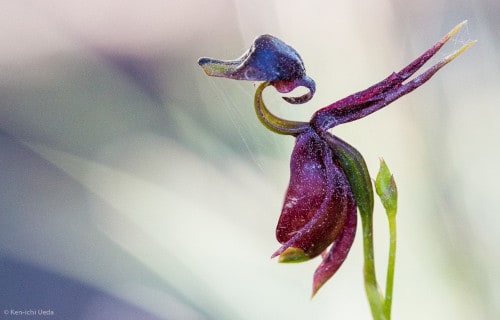
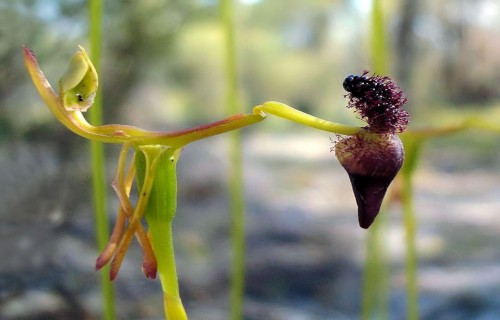
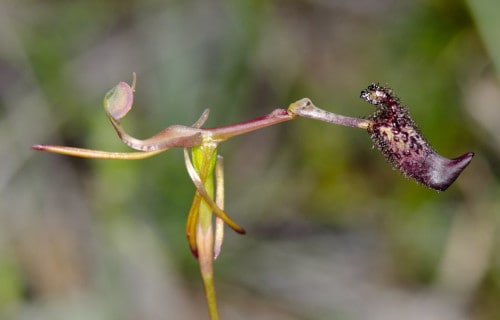
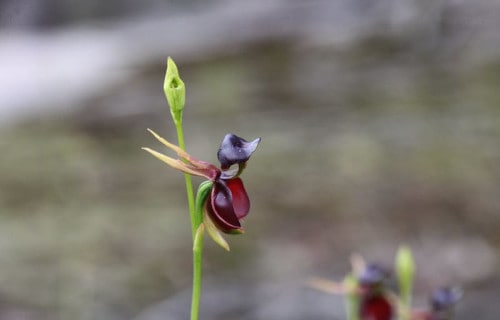
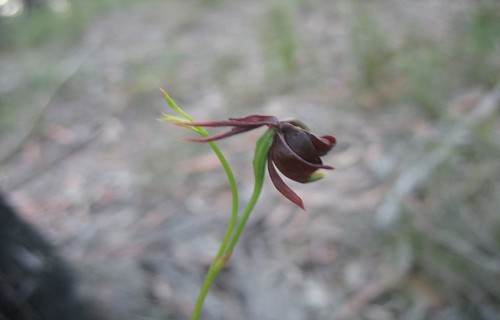
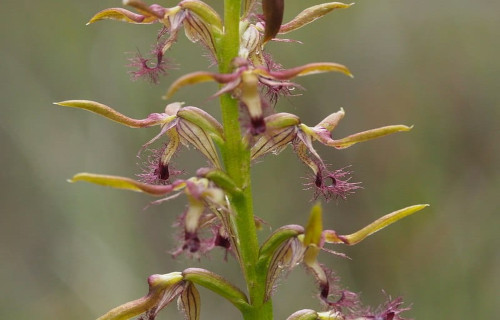
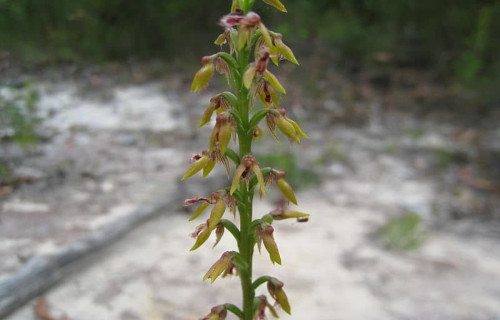
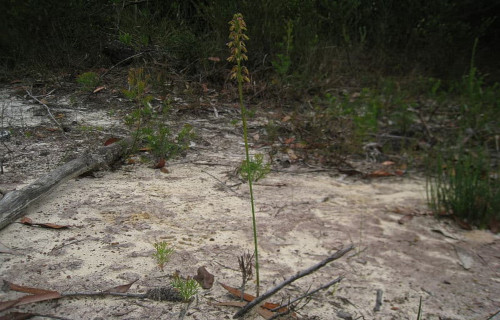
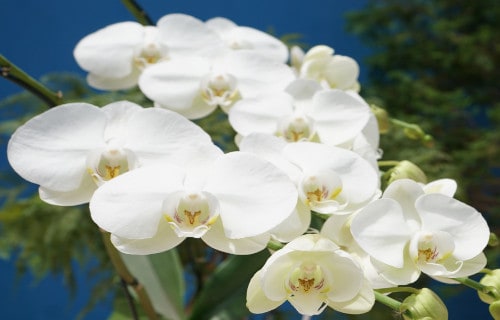
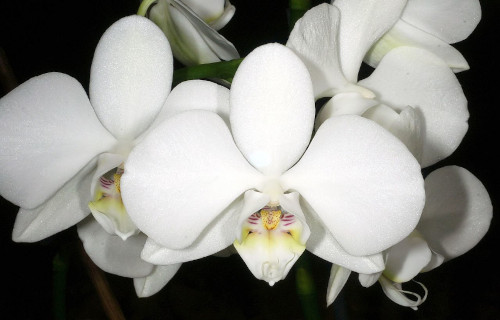
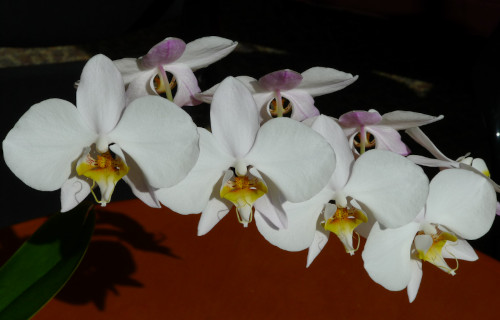









Leave a Reply